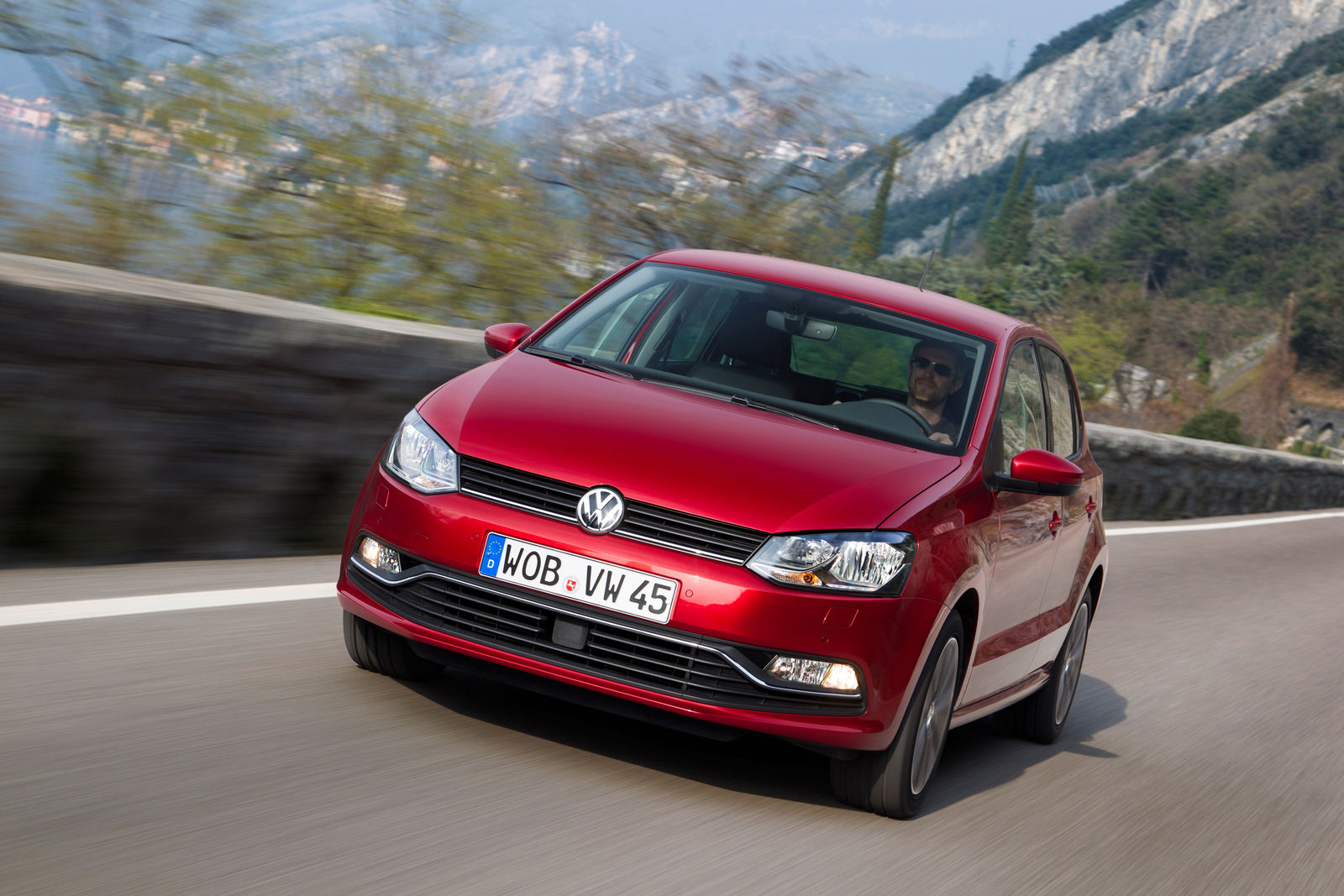Key aspects
The new Polo - International Driving Presentation
Revolution in the compact class: Polo brings the assistance systems of the Golf to the world of "little ones"
Polo is first car in its class with Automatic Post-Collision Braking System as standard
More driving fun with electro-mechanical steering and Sport Select suspension
The new Polo makes its debut with a range of comfort and assistance systems that are unique in this class so far. The Adaptive Cruise Control (ACC) is an intriguing example of the democratisation of innovative technologies: Volkswagen brought the system to the market with the Phaeton for the first time. The Touareg followed. ACC was available for high-volume models for the first time with its integration in the Passat and Golf. With the new Polo, the comfort and safety system has been brought to a new class. Other new assistance systems include the Automatic Post-Collision Braking System (automatically initiates braking of the vehicle that had an accident in order to prevent a subsequent collision), Driver Alert System, "Front Assist" ambient traffic monitoring system with City Emergency Braking. The view towards the rear can now be sharpened by the optional Rear View camera as well. In addition, a new electro-mechanical power steering system and the newly developed "Sport Select" suspension perfect the Polo. All new technologies in detail:
Electro-mechanical steering. The newly developed electro-mechanical steering system is making its debut in the Polo. The compact system was integrated directly into the steering column. The new Polo steering system is distinguished by its very precise and agile response and steering properties and it decouples roadway bumps very well. The system is operated with a steering gear (worm gear) that is driven by an electric motor.
Sport Select suspension. For the Polo, Volkswagen offers for the first time electronically switchable dampers; they constitute the core technology of the new, optional Sport Select suspension. The basic tuning of this suspension is already sporty but more comfortable than a conventional sport suspension. When the driver presses the "Sport" button (in the upper area of the centre console) this activates an electro-mechanical switching valve in the dampers which switches their tuning from this sporty yet comfort-oriented basic tuning to the stiffer characteristic of a sport suspension.
Adaptive Cruise Control (ACC). The system utilises a radar sensor integrated at the front end. The desired vehicle speed can be specified over a range from 30 to 160 km/h. ACC works with either a manual gearbox or with DSG (dual-clutch gearbox). In all Polo cars with DSG, when the vehicle ahead comes to a stop the ACC system comfortably brakes the Polo to a full stop as well. ACC maintains the prescribed vehicle speed together with a preselected distance to the vehicle ahead and it brakes or accelerates automatically in flowing traffic. The system dynamics can be individually varied by selecting a driving programme. If the new Polo is ordered with ACC, it gets the Front Assist ambient traffic monitoring system as well as City Emergency Braking. As an alternative, a module that includes Front Assist and City Emergency Braking may be ordered separately, i.e. without ACC.
Front Assist ambient traffic monitoring system. Front Assist uses a radar sensor integrated in the front of the car to monitor continuously the distance to traffic ahead. Front Assist assists the driver in critical situations by preconditioning the brake system and alerting the driver to any required reactions by visual and audible warnings, and in a second stage by a brief warning jolt. If the driver fails to brake hard enough, the system automatically generates a considerably higher braking force than is needed to avoid a collision. If the driver does not react at all, Front Assist brakes automatically – if necessary until the Polo reaches a standstill. The system also assists the driver by warning if there is insufficient distance to the vehicle ahead. One component of Front Assist is City Emergency Braking.
City Emergency Braking. The City Emergency Braking function is an extension of the Front Assist system. Using a radar sensor, it monitors the space in front of the Volkswagen. The system operates at speeds below 30 km/h. If the driver does not react in a situation with an impending collision with a vehicle ahead that is moving or stationary, then the brake system is preconditioned as in Front Assist. If necessary, City Emergency Braking then automatically initiates hard braking to reduce the severity of the accident. In addition, the driver is assisted with maximum braking force if the pedal force by the driver is insufficient.
Automatic Post-Collision Braking System. A technological highlight of the new Polo is the standard Automatic Post-Collision Braking System. After a collision, it automatically brakes the vehicle to avoid secondary collisions or reduce their severity. The Automatic Post-Collision Braking System is triggered when a primary collision has been detected. It assures controlled handling of the car by the driver, even in case of automatic braking. The driver can "override" the Automatic Post-Collision Braking System at any time. The system is deactivated, for instance, if it senses a press of the accelerator pedal. The Automatic Post-Collision Braking System is also deactivated if the driver initiates hard braking with greater deceleration than the system deceleration.
Driver Alert System. The Driver Alert System detects waning concentration of the driver and outputs an acoustic warning for a duration of five seconds, and a message appears in the instrument cluster recommending a break from driving. If the driver does not take a break within the next 15 minutes, the warning is repeated once.
Notes:
TDI, TSI and DSG are registered trademarks of Volkswagen AG or other companies of the Volkswagen Group in Germany and in other countries.
Features and technical data apply to models offered in Germany. They may differ in other countries.
Media contact

